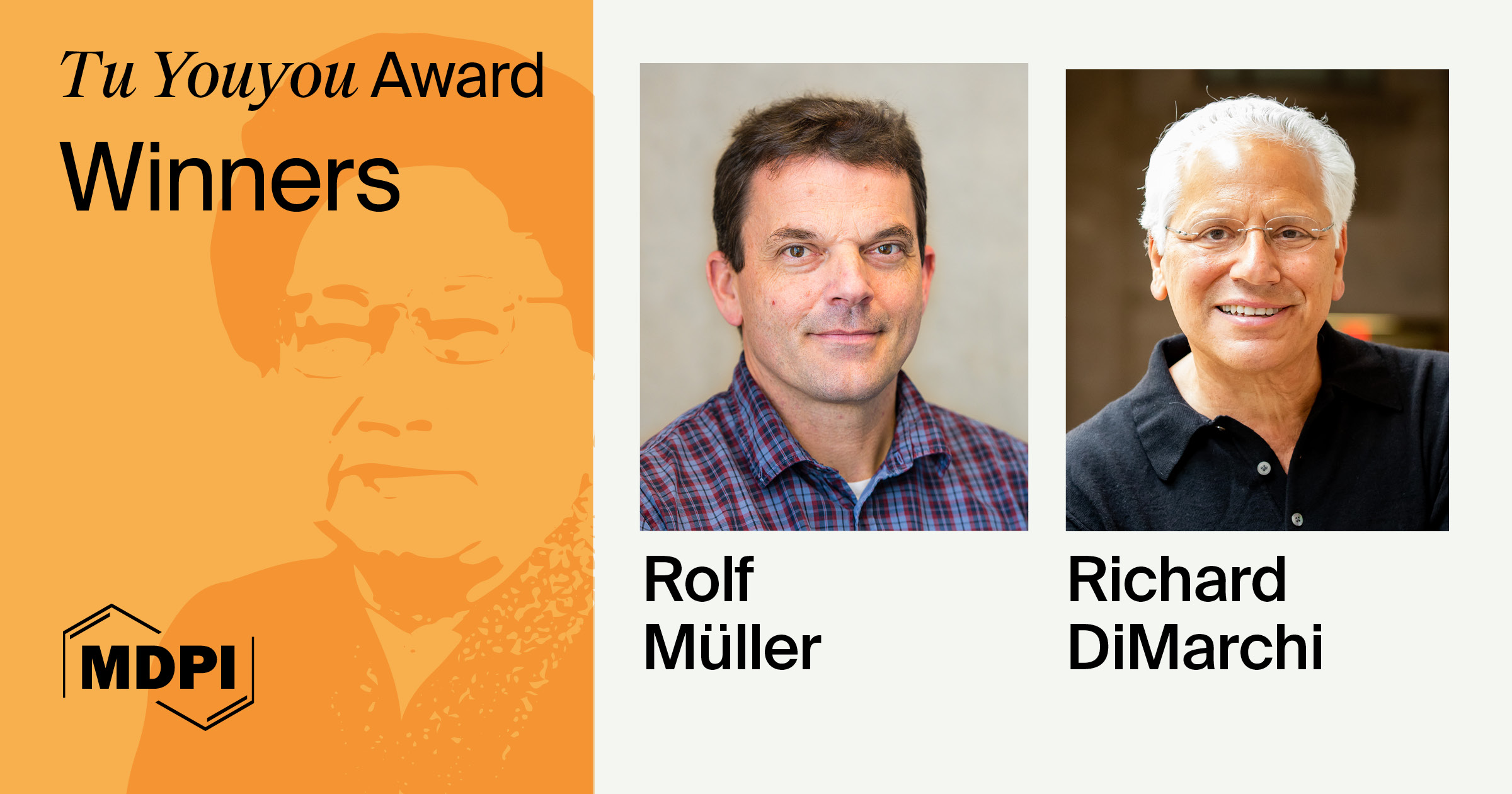-
 The Influence of Carotid and Vertebral Doppler Ultrasonography and Brain MRI Abnormalities on Hearing Levels, Tinnitus Intensities and Frequencies
The Influence of Carotid and Vertebral Doppler Ultrasonography and Brain MRI Abnormalities on Hearing Levels, Tinnitus Intensities and Frequencies -
 Impaired Prosodic Processing but Not Hearing Function Is Associated with an Age-Related Reduction in AI Speech Recognition
Impaired Prosodic Processing but Not Hearing Function Is Associated with an Age-Related Reduction in AI Speech Recognition -
 Teenagers and Young Adults with Cochlear Implants: A Multidisciplinary Follow-Up Study Approach and Baseline Characteristics
Teenagers and Young Adults with Cochlear Implants: A Multidisciplinary Follow-Up Study Approach and Baseline Characteristics
Journal Description
Audiology Research
Audiology Research
is an international, scientific, peer-reviewed, open access journal on audiology and neurotology, published bimonthly online by MDPI (from Volume 10, Issue 2 - 2020). The Italian Society of Vestibology (VIS) is affiliated with Audiology Research and its members receive a discount on the article processing charges.
- Open Access— free for readers, with article processing charges (APC) paid by authors or their institutions.
- High Visibility: indexed within Scopus, ESCI (Web of Science), PubMed, PMC, Embase, and other databases.
- Journal Rank: JCR - Q1 (Audiology and Speech-language Pathology) / CiteScore - Q2 (Podiatry)
- Rapid Publication: manuscripts are peer-reviewed and a first decision is provided to authors approximately 23.5 days after submission; acceptance to publication is undertaken in 2.3 days (median values for papers published in this journal in the second half of 2024).
- Recognition of Reviewers: APC discount vouchers, optional signed peer review, and reviewer names published annually in the journal.
Impact Factor:
2.1 (2023);
5-Year Impact Factor:
1.9 (2023)
Latest Articles
Exploring Adolescents’ Perceptions of Hearing Loss and Hearing Aids in Greece: A Survey Study
Audiol. Res. 2025, 15(3), 58; https://doi.org/10.3390/audiolres15030058 - 12 May 2025
Abstract
►
Show Figures
Objectives: This study investigates Greek teenagers’ general knowledge and perception of hearing loss, hearing aid accessibility, and the challenges associated with hearing impairment. Methods: A 27-item self-reported questionnaire was developed and distributed to 152 participants (aged 12–18) to assess their familiarity with
[...] Read more.
Objectives: This study investigates Greek teenagers’ general knowledge and perception of hearing loss, hearing aid accessibility, and the challenges associated with hearing impairment. Methods: A 27-item self-reported questionnaire was developed and distributed to 152 participants (aged 12–18) to assess their familiarity with hearing loss, amplification availability, communication strategies, and perceptions of hearing loss. Results: While 94.7% of participants recognized that hearing loss affects communication, only 10.5% correctly identified how hearing aids are accessed. Additionally, 42.1% reported having temporarily experienced some form of hearing loss. Most participants (94.7%) acknowledged communication difficulties faced by individuals with hearing loss, and only 3.4% reported being unable to communicate effectively with someone affected. Among those aware of bullying incidents involving individuals with hearing loss, 78.1% identified classmates as the primary source. Conclusions: These findings are consistent with international research and highlight the need for targeted education, awareness initiatives, and clearer access pathways to hearing technology. Improving adolescent hearing health literacy may facilitate early intervention, reduce stigma, and promote inclusion for peers affected by hearing impairment.
Full article
Open AccessArticle
The Link Between Anxiety and Depression, and Balance in Young Adults
by
Tatiana Marques, Patrícia Bernardo and Margarida Serrano
Audiol. Res. 2025, 15(3), 57; https://doi.org/10.3390/audiolres15030057 - 12 May 2025
Abstract
►▼
Show Figures
Background/Objectives: The ability of young adults to control their balance is generally effortless and can occur automatically with minimal cognitive involvement. However, this ability may be compromised when integration conflicts arise due to impairments in vestibular, visual, or somatosensory functions. Hence, psychomotor symptoms
[...] Read more.
Background/Objectives: The ability of young adults to control their balance is generally effortless and can occur automatically with minimal cognitive involvement. However, this ability may be compromised when integration conflicts arise due to impairments in vestibular, visual, or somatosensory functions. Hence, psychomotor symptoms linked to emotional states can also influence postural control. The purpose of this study was to understand the effects of anxiety and depression on balance in young adults. Methods: Our study included 50 young adults (21.86 ± 2.63 years), consisting of 13 males and 37 females. Anxiety and depressive symptoms were evaluated using the Hospital Anxiety and Depression Scale (HADS), while balance was assessed through the Modified Clinical Test for the Sensory Interaction on Balance (mCTSIB). Data analysis was conducted using Pearson’s correlation coefficient test and the Kruskal–Wallis test. Results: Pearson’s correlation analysis indicated that young adults exhibited stable postural control. However, a positive correlation (0.259, p < 0.1) was observed between anxiety levels and the sway index. Additionally, positive correlations were found between anxiety and both somatosensory (0.281, p < 0.05) and visual (0.276, p < 0.1) ratios. Conclusions: The results suggest that higher anxiety levels are associated with reduced postural balance, with sensory inputs, particularly visual and somatosensory, playing a key role in this decreased stability.
Full article
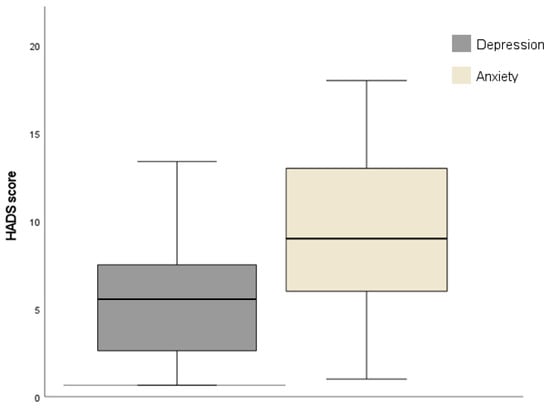
Figure 1
Open AccessReview
Prediction of Auditory Performance in Cochlear Implants Using Machine Learning Methods: A Systematic Review
by
Beyza Demirtaş Yılmaz
Audiol. Res. 2025, 15(3), 56; https://doi.org/10.3390/audiolres15030056 - 8 May 2025
Abstract
Background/Objectives: Cochlear implantation is an advantageous procedure for individuals with severe to profound hearing loss in many aspects related to auditory performance, social communication and quality of life. As machine learning applications have been used in the field of Otorhinolaryngology and Audiology in
[...] Read more.
Background/Objectives: Cochlear implantation is an advantageous procedure for individuals with severe to profound hearing loss in many aspects related to auditory performance, social communication and quality of life. As machine learning applications have been used in the field of Otorhinolaryngology and Audiology in recent years, signal processing, speech perception and personalised optimisation of cochlear implantation are discussed. Methods: A comprehensive literature review was conducted in accordance with the PRISMA guidelines. PubMed, Scopus, Web of Science, Google Scholar and IEEE databases were searched for studies published between 2010 and 2025. We analyzed 59 articles that met the inclusion criteria. Rayyan AI software was used to classify the studies so that the risk of bias was reduced. Study design, machine learning algorithms, and audiological measurements were evaluated in the data analysis. Results: Machine learning applications were classified as preoperative evaluation, speech perception, and speech understanding in noise and other studies. The success rates of the articles are presented together with the number of articles changing over the years. It was observed that Random Forest, Decision Trees (96%), Bayesian Linear Regression (96.2%) and Extreme machine learning (99%) algorithms reached high accuracy rates. Conclusions: In cochlear implantation applications in the field of audiology, it has been observed that studies have been carried out with a variable number of people and data sets in different subfields. In machine learning applications, it is seen that a high amount of data, data diversity and long training times contribute to achieving high performance. However, more research is needed on deep learning applications in complex problems such as comprehension in noise that require time series processing. Funding and other resources: This study was not funded by any institution or organization. No registration was performed for this study.
Full article
(This article belongs to the Special Issue Innovations in Cochlear Implant Surgery)
►▼
Show Figures
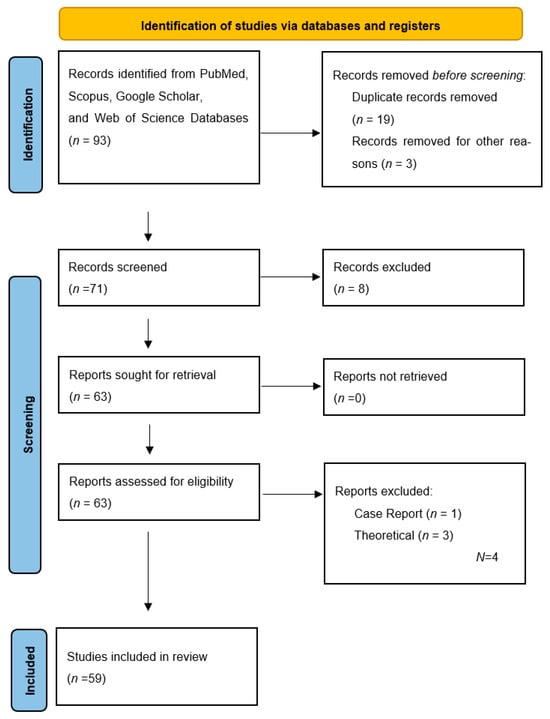
Figure 1
Open AccessArticle
Unilateral Triple Canal Repositioning Maneuver: Principles and Design
by
Marcello Cherchi
Audiol. Res. 2025, 15(3), 55; https://doi.org/10.3390/audiolres15030055 - 8 May 2025
Abstract
Background: Benign paroxysmal positional vertigo is the most common cause of dizziness over the lifespan. Management is complicated by both a diagnostic burden (correctly interpreting specific ocular motor findings) and a therapeutic burden (selecting appropriately targeted treatment maneuvers). Purpose: Devise a canalith repositioning
[...] Read more.
Background: Benign paroxysmal positional vertigo is the most common cause of dizziness over the lifespan. Management is complicated by both a diagnostic burden (correctly interpreting specific ocular motor findings) and a therapeutic burden (selecting appropriately targeted treatment maneuvers). Purpose: Devise a canalith repositioning maneuver to treat simultaneously benign paroxysmal positional vertigo affecting any combination of semicircular canals on one side. If clinically verified, then this will simplify management. Research design: After analyzing the results of a computer simulator applied to several published maneuvers for treating benign paroxysmal positional vertigo, we used basic principles to design a maneuver that simultaneously, for all three semicircular canals on one side, advances otoliths toward the crus of each canal and prevents retreat toward the ampule of each canal and then tested the maneuver in computer simulation. Study sample: Not applicable. Intervention: Not applicable. Data collection and analysis: Not applicable. Results: We developed a maneuver that computer simulation predicts will successfully treat simultaneously benign paroxysmal positional vertigo affecting any combination of semicircular canals on one side. Conclusions: This maneuver should be tested empirically as a standalone maneuver and compared to other maneuvers. Clinical relevance statement: If the efficacy of this maneuver is clinically verified, then it will simplify management by diminishing the diagnostic burden (of determining affected canals) and treatment burden (of selecting the appropriately targeted maneuvers).
Full article
(This article belongs to the Special Issue A Tribute to John M. Epley)
►▼
Show Figures
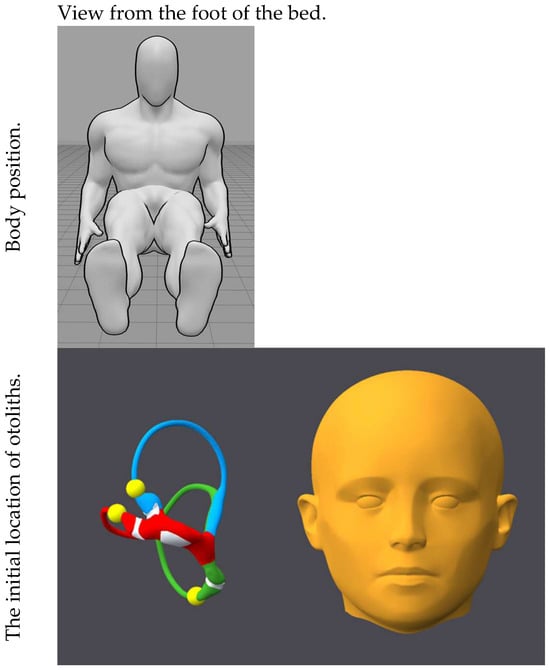
Figure 1
Open AccessArticle
Adaptation of the Kiswahili and Lingala Versions of the LittlEARS® Auditory Questionnaire (LEAQ) in Children with Normal Hearing in the Democratic Republic of Congo (DRC)
by
Ismael K. Byaruhanga, Frans Coninx and Karolin Schäfer
Audiol. Res. 2025, 15(3), 54; https://doi.org/10.3390/audiolres15030054 (registering DOI) - 7 May 2025
Abstract
►▼
Show Figures
Background and objective: Currently, there is no universal newborn hearing (UNHS) screening in the Democratic Republic of Congo (DRC), partly due to financial and organizational reasons. The aim of this study was to adapt the LittlEARS® Auditory Questionnaire (LEAQ) into the
[...] Read more.
Background and objective: Currently, there is no universal newborn hearing (UNHS) screening in the Democratic Republic of Congo (DRC), partly due to financial and organizational reasons. The aim of this study was to adapt the LittlEARS® Auditory Questionnaire (LEAQ) into the Kiswahili and Lingala languages for use as a screening tool for auditory development in children less than two years of age, as objective hearing screening cannot be performed nationwide. Methods: For this purpose, norm data were collected from n = 723 infants (Lingala) and n = 648 infants (Kiswahili) aged between 0 and 24 months in a random selection of four out of seven health zones with pediatric services in the DRC. A non-linear regression model was derived for total scores by age. Pearson correlations were performed to determine whether there were differences between total scores of the questionnaire by region (urban/rural areas). A Mann–Whitney U-test was calculated to determine if there were differences depending on who completed the questionnaire (mother/other caregiver). In addition, a one-way ANOVA was used to determine whether there were differences in the total scores of the questionnaires according to the educational background of the person completing the questionnaire. Results: The Pearson correlation coefficient between total scores and age was 0.81 for Kiswahili and 0.77 for Lingala. There were no significant differences in total scores for all conditions tested (total scores by age, language, region, person who completed the questionnaire, educational background). Conclusions: The LEAQ can be used effectively in a large region such as the DRC, regardless of the region, respondent, and the educational background.
Full article
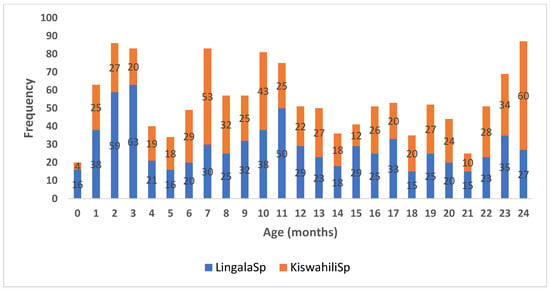
Figure 1
Open AccessArticle
Relationship Between Voice Analysis and Functional Status in Patients with Amyotrophic Lateral Sclerosis
by
Margarita Pérez-Bonilla, Paola Díaz Borrego, Marina Mora-Ortiz, Roberto Fernández-Baillo, María Nieves Muñoz-Alcaraz, Fernando J. Mayordomo-Riera and Eloy Girela López
Audiol. Res. 2025, 15(3), 53; https://doi.org/10.3390/audiolres15030053 - 7 May 2025
Abstract
►▼
Show Figures
Background: Amyotrophic Lateral Sclerosis (ALS) is a progressive neurodegenerative disease affecting both upper and lower motor neurons, with bulbar dysfunction manifesting in up to 80% of patients. Dysarthria, characterized by impaired speech production, is common in ALS and often correlates with disease severity.
[...] Read more.
Background: Amyotrophic Lateral Sclerosis (ALS) is a progressive neurodegenerative disease affecting both upper and lower motor neurons, with bulbar dysfunction manifesting in up to 80% of patients. Dysarthria, characterized by impaired speech production, is common in ALS and often correlates with disease severity. Voice analysis has emerged as a promising tool for detecting disease progression and monitoring functional status. Methods: This study investigates acoustic and biomechanical voice alterations in ALS patients and their association with clinical measures of functional independence. A descriptive observational case series study was conducted, involving 43 ALS patients and 43 age and sex matched controls with non-neurological voice disorders. Sustained vowel /a/ recordings were obtained and analyzed using Voice Clinical Systems® and Praat software (version 6.2.22). Biomechanical and acoustic parameters were correlated with ALS Functional Rating Scale-Revised (ALSFRS-R) and Barthel Index scores. Results: Significant differences were observed between ALS and control groups (elevated muscle force and tension and interedge distance in non-ALS individuals). Between bulbar and spinal ALS subtypes, elevated values were observed in certain parameters in Bulbar ALS patients, indicating irregular vocal fold contact and weakened phonatory control, while spinal ALS exhibited increased values, suggesting higher phonatory muscle tension. Elevated biomechanical parameters were significantly correlated with low ALSFRS-R scores, suggesting a possible relationship between voice measures and functional decline. However, acoustic measurements showed no relationship with performance status. Conclusions: These results highlight the potential of voice analysis as a non-invasive, objective tool for monitoring ALS stage and differentiating between subtypes. Further research is needed to validate these findings and explore their clinical applications.
Full article

Figure 1
Open AccessTechnical Note
Is There Incremental Benefit with Incremental Hearing Device Technology for Adults with Hearing Loss?
by
Vinaya Manchaiah, Sumit Dhar, Larry Humes, Anu Sharma, Brian Taylor and De Wet Swanepoel
Audiol. Res. 2025, 15(3), 52; https://doi.org/10.3390/audiolres15030052 - 6 May 2025
Abstract
►▼
Show Figures
Objective: This paper reviews the current research on hearing device technology, outlines key challenges, and identifies priorities for future investigation. Method: This paper presents an informal narrative review of the current literature on hearing technology, supplemented by expert insights to identify key challenges
[...] Read more.
Objective: This paper reviews the current research on hearing device technology, outlines key challenges, and identifies priorities for future investigation. Method: This paper presents an informal narrative review of the current literature on hearing technology, supplemented by expert insights to identify key challenges and future directions. Results: The proliferation of direct-to-consumer (DTC) hearing devices with varied features and prices underscores the need to assess whether advanced technologies offer meaningful improvements. Understanding these incremental benefits is critical for determining the minimum technology required for optimal outcomes. The paper highlights the limitations in current clinical trials, which often suffer from selection bias, and the inadequacies of existing hearing aid outcome measures that may not capture real-life benefits. It emphasizes the need for real-world evidence and the development of assessment tools that better reflect everyday experiences. While existing research provides some insights into the potential benefits of incremental advances in hearing device technology, the evidence remains inconclusive. Conclusions: Addressing the cost, accessibility, and technological diversity of hearing devices is crucial to advancing hearing healthcare. Future research should prioritize the development of affordable, high-quality devices and establish comprehensive outcome measures that capture real-world benefits. A deeper understanding of these factors can lead to more accessible and effective hearing care, ultimately improving quality of life for individuals with hearing loss.
Full article
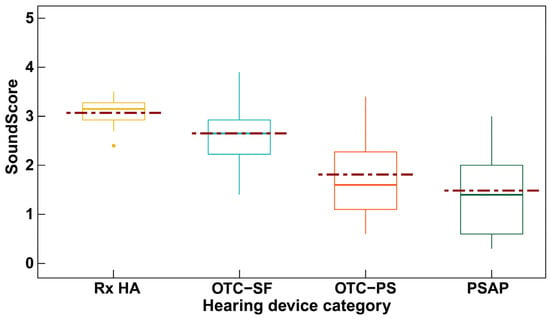
Figure 1
Open AccessTechnical Note
How Much Should Consumers with Mild to Moderate Hearing Loss Spend on Hearing Devices?
by
Vinaya Manchaiah, Steve Taddei, Abram Bailey, De Wet Swanepoel, Hansapani Rodrigo and Andrew Sabin
Audiol. Res. 2025, 15(3), 51; https://doi.org/10.3390/audiolres15030051 - 5 May 2025
Cited by 1
Abstract
►▼
Show Figures
Background: This study examined the relationship between hearing device price and sound quality. Method: A novel consumer-centric metric of sound quality (“SoundScore”) was used to assess hearing devices’ audio performance. Each hearing device is tested with two fittings. The “Initial Fit” is designed
[...] Read more.
Background: This study examined the relationship between hearing device price and sound quality. Method: A novel consumer-centric metric of sound quality (“SoundScore”) was used to assess hearing devices’ audio performance. Each hearing device is tested with two fittings. The “Initial Fit” is designed to approximate the most likely fitting for an individual with a mild-to-moderate sloping sensorineural hearing loss. The “Tuned Fit” includes adjusting parameters optimized to hit prescriptive fitting targets (NAL NL2) on an acoustic manikin. Each fitting is evaluated across five dimensions. Both fittings are combined using a weighted average to create a single number from 0 to 5 representative of a device’s overall audio performance. Seventy-one hearing devices were tested. Results: A strong positive correlation was found between hearing device price and SoundScore. The average SoundScore increased dramatically as the price approached USD 1000, with marginal improvements beyond this point. SoundScore was consistently poor for devices under USD 500, highly variable between USD 500–1000, and consistently good over USD 1000. Conclusions: There is a strong but nonlinear relationship between hearing device price and sound quality. This information can aid consumers in making informed decisions while also assisting hearing healthcare professionals in providing comprehensive guidance to their patients.
Full article

Figure 1
Open AccessArticle
Association Between Unaided Speech Perception in Noise and Hearing Aid Use Mediated by Perceived Benefit
by
Anthony Marcotti, Catherine Silva-Letelier, Javier Galaz-Mella, Alejandro Ianiszewski, Nicole B. Vargas and Eduardo Fuentes-López
Audiol. Res. 2025, 15(3), 50; https://doi.org/10.3390/audiolres15030050 - 1 May 2025
Abstract
Background/Objectives: The conventional strategy for addressing age-related hearing loss is hearing aid (HA) use, yet many individuals underutilize their devices. Despite the positive effects of HA use, adherence remains low, highlighting the importance of studying associated variables. We hypothesize that better unaided
[...] Read more.
Background/Objectives: The conventional strategy for addressing age-related hearing loss is hearing aid (HA) use, yet many individuals underutilize their devices. Despite the positive effects of HA use, adherence remains low, highlighting the importance of studying associated variables. We hypothesize that better unaided speech perception in noise (SPiN) would be associated with greater perceived benefit from HAs, which, in turn, would be linked to increased HA use. Methods: A cross-sectional study design was used, including 114 older adults (≥65 years) who were HA users. HA use and perceived benefit were assessed using questions 1 and 2 of the International Outcome Inventory for Hearing Aids (IOI-HAs), while unaided SPiN performance was measured monaurally with a speech-in-noise test. In the mediation analysis, SPiN performance was the predictor, perceived benefit the mediator, and HA use the outcome. Direct and indirect effects were evaluated using generalized structural equation modeling. Results: No significant total effect was found for the right ear. For the left ear, there was a significant indirect effect of SPiN performance on HA use through perceived benefit (OR = 1.26, 95% CI 1.06–1.57, p = 0.019) but no direct effect (p = 0.563). In addition, a significant total effect of left ear SPiN performance on HA use was observed (p = 0.041). Conclusions: The findings suggest that unaided SPiN performance—particularly in the left ear—may be indirectly associated with HA use through its effect on perceived benefit. These results underscore the potential value of including SPiN assessments in the HA fitting process and counseling strategies for older adults.
Full article
(This article belongs to the Special Issue Hearing Loss: Causes, Symptoms, Diagnosis, and Treatment)
►▼
Show Figures
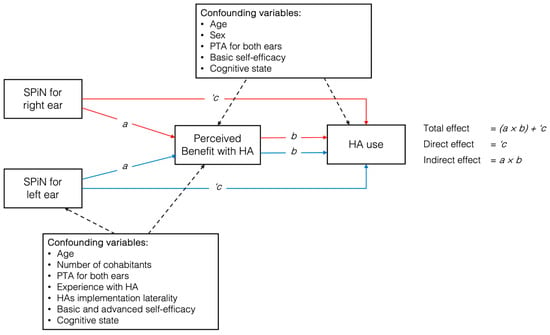
Figure 1
Open AccessArticle
Cochlear and Bone Conduction Implants in Asymmetric Hearing Loss and Single-Sided Deafness: Effects on Localization, Speech in Noise, and Quality of Life
by
Oana Astefanei, Cristian Martu, Sebastian Cozma and Luminita Radulescu
Audiol. Res. 2025, 15(3), 49; https://doi.org/10.3390/audiolres15030049 - 27 Apr 2025
Abstract
Background: Single-sided deafness (SSD) and asymmetric hearing loss (AHL) impair spatial hearing and speech perception, often reducing quality of life. Cochlear implants (CIs) and bone conduction implants (BCIs) are rehabilitation options used in SSD and AHL to improve auditory perception and support functional
[...] Read more.
Background: Single-sided deafness (SSD) and asymmetric hearing loss (AHL) impair spatial hearing and speech perception, often reducing quality of life. Cochlear implants (CIs) and bone conduction implants (BCIs) are rehabilitation options used in SSD and AHL to improve auditory perception and support functional integration in daily life. Objective: We aimed to evaluate hearing outcomes after auditory implantation in SSD and AHL patients, focusing on localization accuracy, speech-in-noise understanding, tinnitus relief, and perceived benefit. Methods: In this longitudinal observational study, 37 patients (adults and children) received a CI or a BCI according to clinical indications. Outcomes included localization and spatial speech-in-noise assessment, tinnitus ratings, and SSQ12 scores. Statistical analyses used parametric and non-parametric tests (p < 0.05). Results: In adult CI users, localization error significantly decreased from 81.9° ± 15.8° to 43.7° ± 13.5° (p < 0.001). In children, regardless of the implant type (CI or BCI), localization error improved from 74.3° to 44.8°, indicating a consistent spatial benefit. In adult BCI users, localization error decreased from 74.6° to 69.2°, but the improvement did not reach statistical significance. Tinnitus severity, measured on a 10-point VAS scale, decreased significantly in CI users (mean reduction: 2.8 ± 2.0, p < 0.001), while changes in BCI users were small and of limited clinical relevance. SSQ12B/C scores improved in all adult groups, with the largest gains observed in spatial hearing for CI users (2.1 ± 1.2) and in speech understanding for BCI users (1.6 ± 0.9); children reported high benefits across all domains. Head shadow yielded the most consistent benefit across all groups (up to 4.9 dB in adult CI users, 3.8 dB in adult BCI users, and 4.6 dB in children). Although binaural effects were smaller in BCI users, positive gains were observed, especially in pediatric cases. Correlation analysis showed that daily device use positively predicted SSQ12 improvement (r = 0.57) and tinnitus relief (r = 0.42), while longer deafness duration was associated with poorer localization outcomes (r = –0.48). Conclusions: CIs and BCIs provide measurable benefits in SSD and AHL rehabilitation. Outcomes vary with age, device, and deafness duration, underscoring the need for early intervention and consistent auditory input.
Full article
(This article belongs to the Special Issue Hearing Loss: Causes, Symptoms, Diagnosis, and Treatment)
►▼
Show Figures

Figure 1
Open AccessArticle
Sound Localization with Hearables in Transparency Mode
by
Sebastian A. Ausili, Nathan Erthal, Christopher Bennett and Hillary A. Snapp
Audiol. Res. 2025, 15(3), 48; https://doi.org/10.3390/audiolres15030048 - 25 Apr 2025
Abstract
►▼
Show Figures
Background: Transparency mode in hearables aims to maintain environmental awareness by transmitting external sounds through built-in microphones and speakers. While technical assessments have documented acoustic alterations in these devices, their impact on spatial hearing abilities under realistic listening conditions remains unclear. This study
[...] Read more.
Background: Transparency mode in hearables aims to maintain environmental awareness by transmitting external sounds through built-in microphones and speakers. While technical assessments have documented acoustic alterations in these devices, their impact on spatial hearing abilities under realistic listening conditions remains unclear. This study aimed to evaluate how transparency mode affects sound localization performance with and without background noise. Methods: Ten normal-hearing adults completed sound localization tasks across azimuth (±90°) and elevation (±30°) with and without background noise. Performance was assessed with and without AirPods Pro in transparency mode. Sound localization performance was evaluated through linear regression analysis and mean absolute errors. Head-Related Transfer Function measurements quantified changes in binaural and spectral cues. Results: While interaural time differences were largely preserved, transparency mode introduced systematic alterations in level differences (up to 8 dB) and eliminated spectral cues above 5 kHz. These modifications resulted in increased localization errors, particularly for elevation perception and in noise. Mean absolute errors increased from 6.81° to 19.6° in azimuth and from 6.79° to 19.4° in elevation without background noise, with further degradation at lower SNRs (p < 0.05). Response times were affected by background noise (p < 0.001) but not by device use. Conclusions: Current transparency mode implementation significantly compromises spatial hearing abilities, particularly in noisy environments typical of everyday listening situations. These findings highlight the need for technological improvements in maintaining natural spatial cues through transparency mode, as current limitations may impact user safety and communication in real-world environments.
Full article
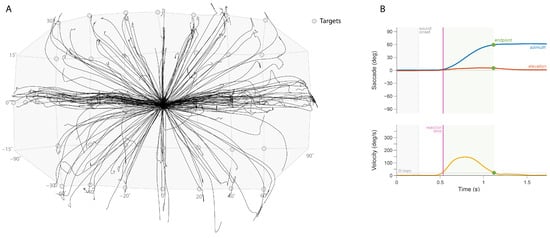
Figure 1
Open AccessCommunication
Auditory Perception Outcomes in Children with Deafness and Additional Disabilities 12 Months After Cochlear Implant Activation
by
Celia Martínez-Pantanalli and Sofía Bravo-Torres
Audiol. Res. 2025, 15(3), 47; https://doi.org/10.3390/audiolres15030047 - 24 Apr 2025
Abstract
►▼
Show Figures
Background/Objectives: This study aimed to evaluate the progress in auditory speech perception in a group of children with cochlear implants and additional disabilities, whose implants were implanted at a public hospital in southern Chile between 2013 and 2019. This population has historically been
[...] Read more.
Background/Objectives: This study aimed to evaluate the progress in auditory speech perception in a group of children with cochlear implants and additional disabilities, whose implants were implanted at a public hospital in southern Chile between 2013 and 2019. This population has historically been excluded from research due to uncertainties regarding their outcomes. Methods: All pediatric patients who received cochlear implants between 2013 and 2019 were considered for inclusion. After obtaining informed consent, relevant data were collected from their medical records. A total of 18 children met the inclusion criteria. Data analysis was performed using Jamovi software. Results: The minimum age at cochlear implant activation was 2 years, and the maximum was 16.1 years. The median Category of Auditory Performance (CAP) score was 0 pre-implantation and increased to 2 to 12 months post-implantation. Conclusions: Cochlear implantation provides clear benefits for children with additional disabilities. Although gains in auditory perception may be limited in some cases, implantation enables access to the world of sound. Even when oral language development is not fully achieved, parents frequently report positive changes in their children’s interaction with their environment, suggesting an overall improvement in quality of life.
Full article

Figure 1
Open AccessReview
The Ongoing Challenges of Hearing Loss: Stigma, Socio-Cultural Differences, and Accessibility Barriers
by
Mirko Aldè, Umberto Ambrosetti, Stefania Barozzi and Samantha Aldè
Audiol. Res. 2025, 15(3), 46; https://doi.org/10.3390/audiolres15030046 - 24 Apr 2025
Abstract
►▼
Show Figures
Background/Objectives: Hearing loss (HL) is a prevalent condition that can lead to social exclusion. This review explores the epidemiological, cultural, and social dimensions of HL and examines the barriers to accessibility that individuals with HL encounter. Methods: This research employs a
[...] Read more.
Background/Objectives: Hearing loss (HL) is a prevalent condition that can lead to social exclusion. This review explores the epidemiological, cultural, and social dimensions of HL and examines the barriers to accessibility that individuals with HL encounter. Methods: This research employs a narrative review approach to provide a comprehensive overview of HL, focusing on stigma, gender disparities, cultural and social differences, and accessibility challenges. Results: The review highlights pervasive prejudices surrounding HL and hearing devices. Gender disparities are evident, with Deaf women facing compounded challenges. Cultural perspectives on HL differ widely, ranging from the medical model, which emphasizes treatment using hearing devices, to the Deaf community’s social model, which views deafness as a cultural identity. Socioeconomic disparities further restrict access to modern technologies, particularly in low-income settings, while intersectional discrimination affects marginalized groups within the Deaf community. Public spaces also present significant barriers related to communication, architecture, and technology, which hinder accessibility for individuals with HL. Conclusions: A cultural shift is essential to dismantle societal stereotypes and reduce discrimination associated with HL. Moreover, improving accessibility for individuals with HL necessitates a multifaceted approach, including accessible design, staff training, and the integration of assistive technologies.
Full article

Figure 1
Open AccessArticle
The Effect of Hearing Aid Amplification on Gait Parameters: A Pilot Study Using Ear-Worn Motion Sensors
by
Ann-Kristin Seifer, Arne Küderle, Kaja Strobel, Ronny Hannemann and Björn M. Eskofier
Audiol. Res. 2025, 15(3), 45; https://doi.org/10.3390/audiolres15030045 - 23 Apr 2025
Abstract
►▼
Show Figures
Background/Objectives: Hearing loss, particularly in older adults, is associated with reduced physical functioning; increased fall risk; and altered gait patterns, including slower walking speed and shorter step length. While the underlying mechanisms are not fully understood, one possibility is that these gait changes
[...] Read more.
Background/Objectives: Hearing loss, particularly in older adults, is associated with reduced physical functioning; increased fall risk; and altered gait patterns, including slower walking speed and shorter step length. While the underlying mechanisms are not fully understood, one possibility is that these gait changes result from an additional cognitive load due to hearing difficulties. Prior research suggests that hearing aids may improve balance; however, their impact on gait remains less well explored. Methods: This study investigated gait parameters in individuals with hearing loss as they walked with and without hearing aid amplification under different dual-task conditions. Additionally, we showed the potential of ear-worn sensors for detecting relevant gait changes. To achieve this, we used a hearing-aid-integrated accelerometer and our open-source EarGait framework comprising gait-related algorithms specifically developed for ear-worn sensors. Results: Our findings revealed no significant differences in gait velocity or step length between the unaided and aided conditions. For stride time, we observed a significant interaction effect; however, the effect size was negligible. The dual-task costs were lower than in previous reports, indicating that the applied dual-task paradigm did not induce the expected cognitive demand. The ear-worn gait analysis system showed strong performance compared to foot-worn sensors. Conclusions: Our findings indicate that in controlled, low-cognitive-demand settings, hearing aid amplification does not affect gait performance and, therefore, neither hinders nor improves walking performance. Additionally, the high accuracy of the ear-worn gait analysis system highlights the strong potential of ear-mounted wearable devices (“earables”) for real-world mobility assessments. Future research should explore more complex real-world conditions to better understand the impact of hearing aids on walking behavior. Our proposed earable-based system offers a promising tool for continuous, unobtrusive gait monitoring in everyday environments.
Full article

Figure 1
Open AccessArticle
Cochlear Implantation in the United Arab Emirates: Otolaryngologists’ Knowledge, Attitudes, and Practices
by
Muhammed Ayas, Ahmad Al Amadi, Ahmad Al Shamsi, Jameel Muzaffar and Manohar Bance
Audiol. Res. 2025, 15(2), 44; https://doi.org/10.3390/audiolres15020044 - 21 Apr 2025
Abstract
►▼
Show Figures
Background: Cochlear implants (CIs) are the gold standard intervention for severe-to-profound sensorineural hearing loss. Their success depends not only on technological advancements but also on the knowledge, attitudes, and practices (KAP) of otolaryngologists responsible for patient selection, counselling, and postoperative management. Objective: This
[...] Read more.
Background: Cochlear implants (CIs) are the gold standard intervention for severe-to-profound sensorineural hearing loss. Their success depends not only on technological advancements but also on the knowledge, attitudes, and practices (KAP) of otolaryngologists responsible for patient selection, counselling, and postoperative management. Objective: This study aimed to evaluate the KAP of otolaryngologists in the UAE towards CIs, identify gaps in training and decision-making, and assess adherence to global CI protocols. Methods: A cross-sectional study was conducted using a self-administered online questionnaire distributed to otolaryngologists across public and private healthcare institutions in the UAE. The survey assessed demographics, clinical knowledge, attitudes towards CIs, and clinical practices. Descriptive and inferential statistical analyses were performed to assess the relationships among knowledge levels, referral frequency, and institutional factors. Results: A total of 31 otolaryngologists participated. While 74% demonstrated moderate-to-high knowledge of CIs, 39% had low awareness of national guidelines. Most (61%) strongly supported CI integration into treatment protocols, but financial and institutional barriers were frequently cited as challenges. Knowledge levels significantly correlated with referral frequency (p < 0.001), indicating a gap between awareness and practice. Conclusions: This is the first study in the UAE assessing otolaryngologists’ KAP regarding CIs. Despite favourable attitudes, limited guideline awareness, financial barriers, and inconsistent multidisciplinary collaboration remain challenges. Targeted clinician education, standardised CI guidelines aligned with international benchmarks, and improved funding mechanisms are essential to enhance CI accessibility and optimise patient outcomes in the region.
Full article

Figure 1
Open AccessArticle
Can Mismatch Negativity Be Used as an Indicator to Predict Central Auditory Deficits in Individuals with Normal Hearing?
by
Lichun Zhang, David Mißler, Karsten Ehrt, Wilma Großmann, Robert Mlynski and Florian Herrmann Schmidt
Audiol. Res. 2025, 15(2), 43; https://doi.org/10.3390/audiolres15020043 - 16 Apr 2025
Abstract
►▼
Show Figures
Background/Objectives: In the early stage of presbycusis, patients experience reduced speech perception in noisy environments despite normal audiometry, normally known as hidden hearing loss. Diagnostic indicators like the reduced amplitude of ABR wave I, elevated extended high-frequency threshold (EHT), and decreased middle
[...] Read more.
Background/Objectives: In the early stage of presbycusis, patients experience reduced speech perception in noisy environments despite normal audiometry, normally known as hidden hearing loss. Diagnostic indicators like the reduced amplitude of ABR wave I, elevated extended high-frequency threshold (EHT), and decreased middle ear muscle reflex (MEMR) amplitude aim to identify biomarkers of peripheral auditory pathology but remain inconsistent. Mismatch negativity (MMN) is a cortical auditory evoked potential generated when the brain detects sound changes. This study aimed to assess MMN as a diagnostic tool for hidden hearing loss in adults. Methods: Seventy-three subjects with normal hearing underwent an extended pure-tone audiogram examination ranging from 0.125 to 16 kHz and a subsequent MMN assessment with two different paradigms: a speech (ba/da) and a tone (1/2 kHz) paradigm. The MMN’s amplitude and latency were measured and analyzed. Results: The outcome shows a significant age-related effect on MMN amplitude in the speech condition (χ² = 13.0, p = 0.002). Specifically, the MMN amplitude in the 25–30-year-old group was significantly smaller than in the 20–25-year-old group (p = 0.0015, Cohen’s d = 0.63). Additionally, no further effects of age were observed on the cortical potentials examined. Also, neither tone nor speech paradigms showed a significant influence of EHT on the amplitude or latency of either MMN or P300. Conclusions: The application of MMN as an electrophysiological tool to diagnose hidden hearing loss in normal hearing adults has limitations. However, in contrast to MMN responses to tonal stimuli, the present study reveals that MMN amplitude obtained with speech stimuli may indicate early signs of central auditory deficits.
Full article

Figure 1
Open AccessArticle
Long-Term Follow-Up of Vestibular Function in Cochlear-Implanted Teenagers and Young Adults
by
Niki Karpeta, Eva Karltorp, Luca Verrecchia and Maoli Duan
Audiol. Res. 2025, 15(2), 42; https://doi.org/10.3390/audiolres15020042 - 13 Apr 2025
Abstract
►▼
Show Figures
Background: Vestibular function implements head position regulation and body spatial navigation. It matures during childhood and adolescence and integrates with the completion of an individual’s motor development. Nevertheless, vestibular impairment is associated with profound paediatric hearing loss and has a negative impact on
[...] Read more.
Background: Vestibular function implements head position regulation and body spatial navigation. It matures during childhood and adolescence and integrates with the completion of an individual’s motor development. Nevertheless, vestibular impairment is associated with profound paediatric hearing loss and has a negative impact on the child’s motor proficiency. Cochlear implantation (CI) is the treatment of choice for severe hearing loss, where conservative treatment plans are not appropriate or fail. The Teenager and Young Adults Cochlear Implant (TAYACI) study investigates the long-term outcomes of early implantation with respect to the hearing, speech, psychological, and balance development among CI users. Methods: This study focuses on the vestibular function and the appropriate methods for vestibular assessment. The results of two established vestibular test methods are explored: the video head impulse test (vHIT) and cervical/ocular vestibular-evoked myogenic potentials (cVEMP, oVEMP) with air and bone conduction vibration stimulation. The results of vHIT, cVEMP, and oVEMP, per implanted ear and the relation to the aetiology of hearing loss are reported. An additional dynamic visual acuity (DVA) test was included to assess clinical oscillopsia. Results: Overall abnormal lateral canal testing was detected in 35/76 (46.1%) of the implanted ears. Bone-conducted cVEMP (BC cVEMP) was pathological in 33/76 (43.3%) and BC oVEMP in 42/76 (55.3%). Lateral canal impairment was associated with the background diagnosis of the hearing loss. Oscillopsia was related to bilateral canal impairment (sensitivity 73% specificity 100%). Conclusions: Lateral canal testing together with BC VEMPs were the most reproducible modules for vestibular testing The above tests were related to each other and complemented the overall vestibular assessment. DVA is a helpful tool to screen dynamic oscillopsia in patients with bilateral vestibular impairment.
Full article

Figure 1
Open AccessArticle
Electrode Impedance Subcomponent Analysis in Cochlear Implant Patients with Rising or Fluctuating Electrode Impedances
by
Aniket A. Saoji, Madison K. Graham, Melissa D. DeJong, Joscelyn R. K. Martin, Joerg Pesch and Filiep J. Vanpoucke
Audiol. Res. 2025, 15(2), 41; https://doi.org/10.3390/audiolres15020041 - 12 Apr 2025
Abstract
►▼
Show Figures
Background/Objectives: Electrode impedance is crucial for optimizing cochlear implant (CI) stimulation and hearing outcomes. While typically stable, some patients experience unexplained impedance fluctuations. This study used electrode impedance subcomponent analysis to identify the subcomponents contributing to these impedance fluctuations. Methods: This study analyzed
[...] Read more.
Background/Objectives: Electrode impedance is crucial for optimizing cochlear implant (CI) stimulation and hearing outcomes. While typically stable, some patients experience unexplained impedance fluctuations. This study used electrode impedance subcomponent analysis to identify the subcomponents contributing to these impedance fluctuations. Methods: This study analyzed clinical electrode impedances and transimpedance matrix (TIM) measurements in 10 CI patients with Nucleus devices (CI422, CI522, or CI622 electrode arrays) who exhibited fluctuating or rising electrode impedances. TIM measurements used a cathodic-leading biphasic pulse (110 CLs, 75 µs/phase, 7 µs interphase interval). Electrode impedances were determined at 6, 12, 18, 24, and 75 µs, and subcomponents (access resistance [near-field/far-field] and polarization impedance [Warburg capacitance/Faraday resistance]) were calculated. Results: Both access resistance and polarization impedance changes contributed to impedance fluctuations. Large changes in near-field resistance compared to far-field resistance were associated with increased resistance to current flow closer to the surface of the electrode. The decreased double-layer capacitance and slightly increased Faraday resistance further suggested increased resistance to charge transfer at the electrode–electrolyte interface. Conclusions: Electrode impedance subcomponent analysis reveals changes in the electrochemical reaction at the electrode surface that cause fluctuating or rising CI electrode impedances.
Full article

Figure 1
Open AccessArticle
Exploring the Influence of Online Price Anchoring and Attribute Framing on the Likelihood of Hearing Aid Purchases
by
Craig Richard St. Jean, Jacqueline Cummine, Gurjit Singh and William (Bill) Hodgetts
Audiol. Res. 2025, 15(2), 40; https://doi.org/10.3390/audiolres15020040 - 12 Apr 2025
Abstract
►▼
Show Figures
Background/Objectives: This study investigated whether exposure to various types of information online can influence adults aged 40 and above in their likelihood to purchase hearing aids (HAs). Specifically, it examined the effects of price anchoring, using high or low HA prices in
[...] Read more.
Background/Objectives: This study investigated whether exposure to various types of information online can influence adults aged 40 and above in their likelihood to purchase hearing aids (HAs). Specifically, it examined the effects of price anchoring, using high or low HA prices in advertisements, and attribute framing, using product descriptions that highlighted lifestyle appeal or technological capabilities. Methods: In a 2 × 2 experimental design, 271 participants browsed a website simulating an online search for hearing health information. Participants then rated their likelihood of purchasing three fictitious HAs as well as their likelihood of not purchasing any device. Results: Two-way ANCOVAs indicated no significant main effects of anchoring or framing on purchase likelihood for the fictitious devices (covariates included self-rated hearing ability, trust in online health information, and HA knowledge and importance). No significant interaction effects emerged. However, exploratory analyses revealed significant anchoring effects for two of the three devices among participants with below-median self-rated hearing. Additionally, self-rated knowledge was a significant covariate in the model for all devices (p < 0.001), positively correlating with purchase likelihood. Participants with above-median self-rated knowledge showed significantly higher purchase likelihood for all devices (p < 0.001, d ≥ 0.572 for all comparisons), while those with below-median knowledge displayed a significant anchoring effect for two outcomes. Conclusions: Enhanced HA knowledge may increase HA purchase likelihood and reduce the potential anchoring effects of online advertising. Further research is needed to determine the impact of exposure to high or low prices on HA purchase decisions, especially among those with poorer hearing.
Full article

Figure 1
Open AccessArticle
An Ontology-Based Expert System Approach for Hearing Aid Fitting in a Chaotic Environment
by
Guy Merlin Ngounou, Anne Marie Chana, Bernabé Batchakui, Kevina Anne Nguen and Jean Valentin Fokouo Fogha
Audiol. Res. 2025, 15(2), 39; https://doi.org/10.3390/audiolres15020039 - 8 Apr 2025
Abstract
►▼
Show Figures
Background/Objectives: Hearing aid fitting is critical for hearing loss rehabilitation but involves complex, interdependent parameters, while AI-based technologies offer promise, their reliance on large datasets and cloud infrastructure limits their use in low-resource settings. In such cases, expert knowledge, manufacturer guidelines, and research
[...] Read more.
Background/Objectives: Hearing aid fitting is critical for hearing loss rehabilitation but involves complex, interdependent parameters, while AI-based technologies offer promise, their reliance on large datasets and cloud infrastructure limits their use in low-resource settings. In such cases, expert knowledge, manufacturer guidelines, and research findings become the primary sources of information. This study introduces DHAFES (Dynamic Hearing Aid Fitting Expert System), a personalized, ontology-based system for hearing aid fitting. Methods: A dataset of common patient complaints was analyzed to identify typical auditory issues. A multilingual self-assessment questionnaire was developed to efficiently collect user-reported complaints. With expert input, complaints were categorized and mapped to corresponding hearing aid solutions. An ontology, the Hearing Aid Fitting Ontology (HAFO), was developed using OWL 2. DHAFES, a decision support system, was then implemented to process inputs and generate fitting recommendations. Results: DHAFES supports 33 core complaint classes and ensures transparency and traceability. It operates offline and remotely, improving accessibility in resource-limited environments. Conclusions: DHAFES is a scalable, explainable, and clinically relevant solution for hearing aid fitting. Its ontology-based design enables adaptation to diverse clinical contexts and provides a foundation for future AI integration.
Full article

Figure 1

Journal Menu
► ▼ Journal Menu-
- Audiology Research Home
- Aims & Scope
- Editorial Board
- Topical Advisory Panel
- Instructions for Authors
- Special Issues
- Topics
- Topical Collections
- Article Processing Charge
- Indexing & Archiving
- Editor’s Choice Articles
- Most Cited & Viewed
- Journal Statistics
- Journal History
- Journal Awards
- Society Collaborations
- Editorial Office
Journal Browser
► ▼ Journal BrowserHighly Accessed Articles
Latest Books
E-Mail Alert
News
Topics

Conferences
Special Issues
Special Issue in
Audiology Research
Inner Ear Conductive Hearing Loss: Current Studies and Controversies
Guest Editors: Andrea Castellucci, Eduardo Martin Sanz, Soumit Dasgupta, Issam SalibaDeadline: 30 May 2025
Special Issue in
Audiology Research
Innovations in Cochlear Implant Surgery
Guest Editors: Adrien Eshraghi, Emre OcakDeadline: 30 June 2025
Special Issue in
Audiology Research
Hearing Loss and Cognition: New Frontiers
Guest Editors: Domenico Testa, Giovanni MottaDeadline: 30 June 2025
Special Issue in
Audiology Research
Hearing Beyond Words: Advancements in Music Perception and Enjoyment for the Hearing-Impaired Population
Guest Editors: Andrea Frosolini, Giorgos DritsakisDeadline: 31 August 2025
Topical Collections
Topical Collection in
Audiology Research
Cochlear Implants: Challenges and Opportunities in Hearing Rehabilitation
Collection Editors: Andrea Ciorba, Daniele Borsetto
Topical Collection in
Audiology Research
Translational Audiology
Collection Editor: Agnieszka Szczepek





